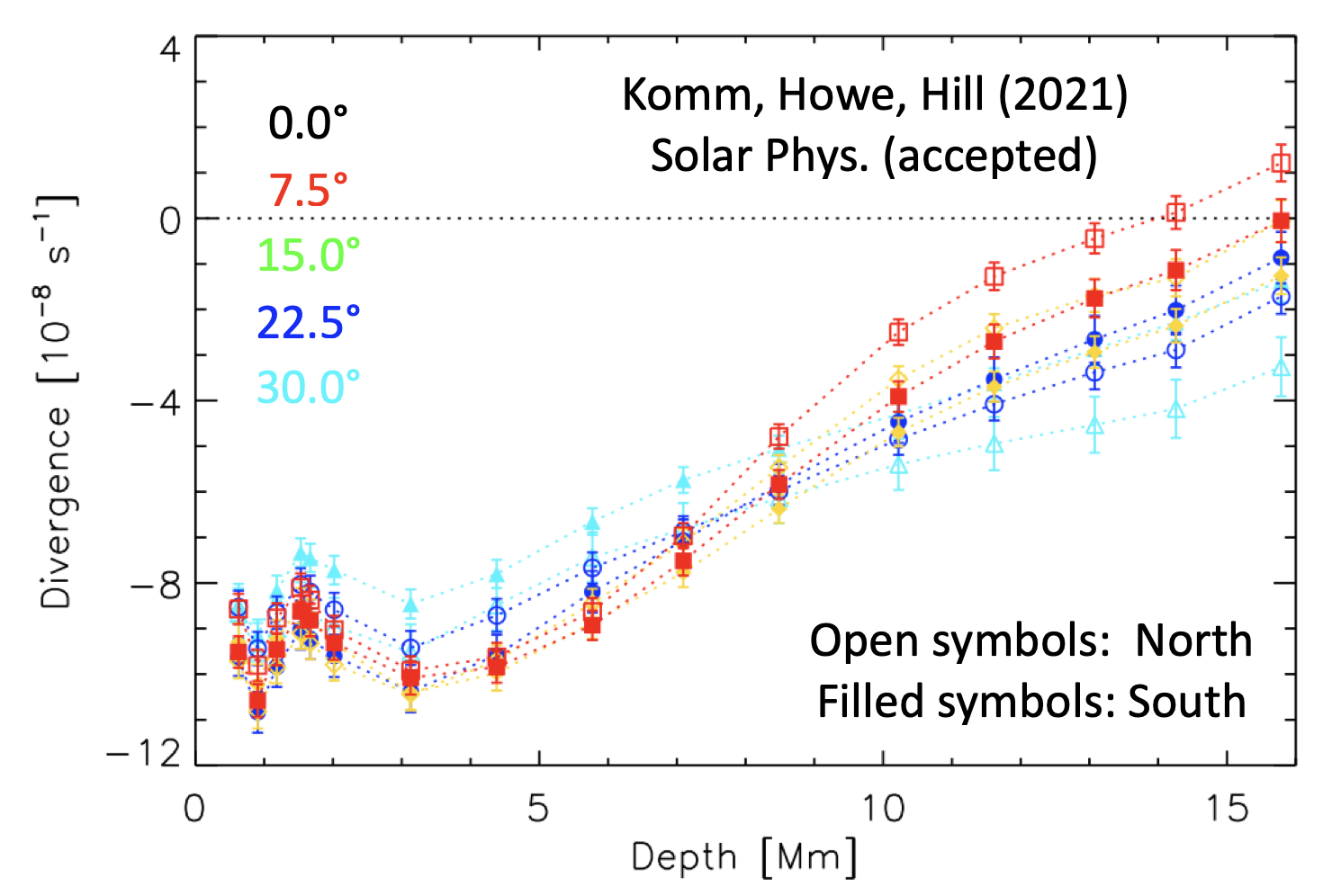Author: Rudolf Komm
Apr 30, 2021

The solar-cycle variations of the zonal and meridional flow are the best-measured phenomena of the solar interior associated with the cycle of magnetic activity. Bands of faster- and slower-than-average rotation move from mid-latitude toward the equator during a solar cycle. After subtracting the temporal mean, the residual meridional flow converges near the mean latitude of activity at locations that coincide with the fast and slow bands of the residual-rotation pattern.
We derived the solar-cycle variation of the flows and their divergence for active and quiet regions using ring-diagram analysis. Bands of converging and diverging flows move with latitude similar to the patterns of the zonal and meridional flows. While the flows of the active-region subset are, on average, more converging than those of the quiet-region subset, the solar-cycle pattern is present in both subsets.
We derived the extra divergence associated with active regions using the values of quiet regions as baseline. Figure 1 shows that the amplitude of the extra divergence has its maximum at shallow depths (less than 6 Mm) and decreases with increasing depth. In a previous study, we found that the meridional flow associated with active regions has a maximum amplitude near 3 Mm. Since the divergence values in super-synoptic maps are dominated by the divergence of the meridional flow, the two studies show that the converging meridional flows attributed to active regions are a shallow-layer phenomenon.
Komm, R., Howe, R. & Hill, F (2021), 'Divergence and Vorticity of Subsurface Flows During Solar Cycles 23 and 24', Submitted for publication in Solar Physics DOI:TBD